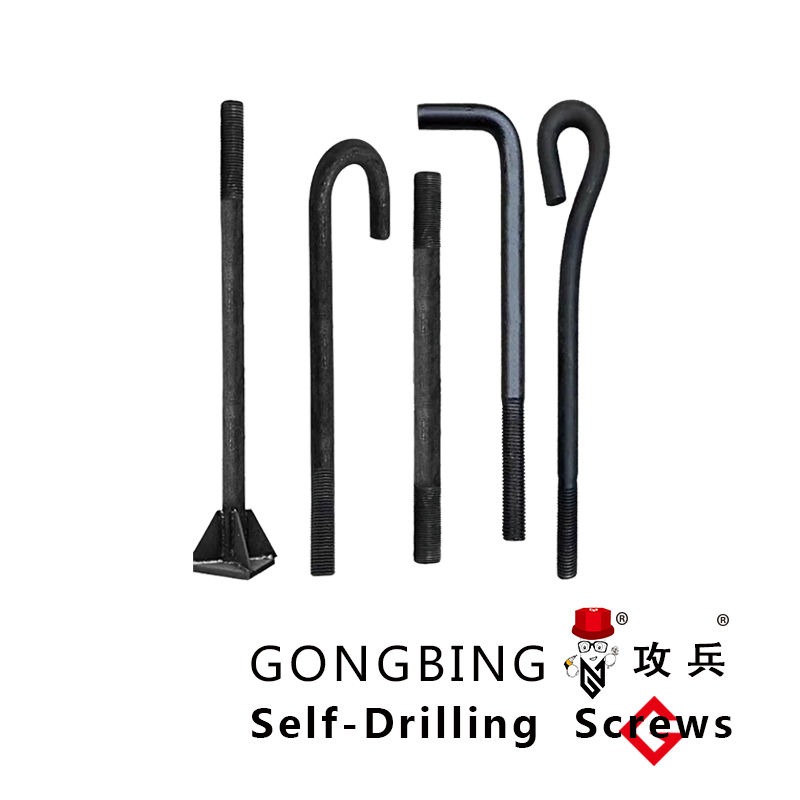Innovative Solutions for Secure Installations with M10 Wedge Anchor Technology for Construction Projects
Understanding the Wedge Anchor M10 A Comprehensive Guide
The Wedge Anchor M10 stands as an essential component in the world of construction and structural engineering. Designed to provide a reliable means of securing fixtures to concrete surfaces, this type of anchor is key for applications ranging from building frameworks to heavy machinery installations. This article will explore what a Wedge Anchor M10 is, its applications, benefits, and installation processes.
What is a Wedge Anchor M10?
A Wedge Anchor M10 is a type of mechanical anchor that features a threaded rod (with a nominal diameter of 10 mm) and a wedge-shaped expansion mechanism. Typically made of steel, these anchors are constructed to provide a strong bond with concrete when inserted. The design allows the anchor to expand when a bolt is tightened, creating a secure grip within the concrete substrate.
Applications of Wedge Anchor M10
Wedge anchors are widely used across various industries due to their versatility and strength. Some common applications include
2. Manufacturing Heavy machinery that requires permanent fixtures often utilizes Wedge Anchors M10 to provide stability and reduce vibrations.
3. Infrastructure In civil engineering projects, these anchors can help secure guardrails, signposts, and other structural installations.
4. Residential Projects Wedge anchors can also be used in home improvement applications, such as installing shelving units or securing outdoor furniture.
Benefits of Using Wedge Anchor M10
Using Wedge Anchor M10 offers several advantages
- High Load Capacity These anchors are designed to hold substantial loads, making them suitable for various structural applications.
wedge anchor m10

- Ease of Installation The installation process is straightforward, requiring minimal tools and expertise compared to other anchoring systems. This makes them a preferred choice among contractors and DIY enthusiasts alike.
- Corrosion Resistance Many Wedge Anchors are available with protective coatings or made from stainless steel, which enhances their durability in various environments, including those exposed to moisture or chemicals.
- Versatile Design With various lengths and strengths available, the Wedge Anchor M10 can be selected based on the specific requirements of the project, offering flexibility to engineers and project managers.
Installation Process
The installation of a Wedge Anchor M10 involves a few key steps
1. Drill the Hole Use a hammer drill with a concrete bit to create a hole of appropriate diameter and depth in the concrete surface. The hole should typically be slightly deeper than the anchor's length.
2. Clean the Hole It is crucial to remove any debris or dust from the hole to ensure a strong bond between the anchor and concrete.
3. Insert the Anchor Place the Wedge Anchor into the hole, ensuring that it is properly aligned.
4. Tighten the Nut Using a wrench, tighten the nut on the anchor. This will pull the wedge mechanism upward, causing it to expand against the sides of the hole and create a secure hold.
5. Check Stability After installation, it is important to check the stability of the anchor to ensure it will perform as expected under load.
Conclusion
The Wedge Anchor M10 is a critical component in achieving structural integrity and safety in various applications. Its strength, ease of installation, and adaptability make it a favored choice for many construction and manufacturing projects. Understanding its features, benefits, and proper installation techniques is essential for anyone in the field, ensuring that structures remain secure for years to come. Whether you are an engineer, contractor, or DIY enthusiast, the Wedge Anchor M10 is a tool worth considering for your next project.
-
Weatherproof Plastic Expansion Anchors for OutdoorNewsJun.06,2025
-
Sustainability in the Supply Chain: Eco-Friendly TEK Screws ProductionNewsJun.06,2025
-
Load-Bearing Capacity of External Insulation FixingsNewsJun.06,2025
-
Double Head Bolts: Enhancing Efficiency in Industrial MachineryNewsJun.06,2025
-
Corrosion Resistance in Chipboard Screws: Coatings for Wholesale DurabilityNewsJun.06,2025
-
Butterfly Toggle Bolts : Enhancing Structural ResilienceNewsJun.06,2025
